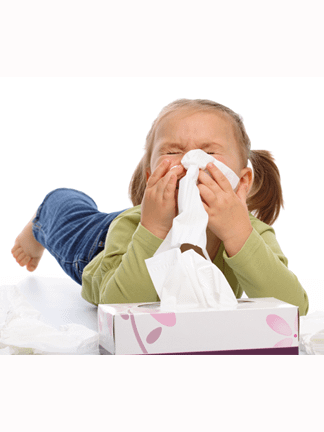As a mother, I dreaded the days when my one-year-old suffered from common cold. Her little body struggled with every sneeze. Her eyes looked so weak and her appetite dwindled. Like any parent, it broke my heart to see that I couldn't instantly take away my toddler's pain. I couldn't stand not doing anything about it, so I did my part by learning more about this infection and the ways I can correctly handle my child's symptoms.
The virus that spreads like fire
According to US-based health care system John Hopkins Medicine, the common cold is an infection of the upper respiratory tract that can be caused by over 200 types of viruses. With new types of viruses developing over time, the human body is not capable of resisting each virus that it gets exposed to. Hence, the cold is a common and recurring health problem.
The cold virus can easily spread without us knowing it. For instance, whenever my child touches her eyes or nose after touching contaminated toys or surfaces, there is a huge possibility that she will catch the cold virus. UK-based publicly funded healthcare organization National Health Service confirms that transmission can also happen when somebody infected with the cold virus sneezes or coughs and the child inhales the drops of fluid carrying the virus. With poor immune system and the lack of proper hand washing, children are truly at risk of acquiring the common cold when exposed to infected people or contaminated things.
The inevitable symptoms
As soon as a child catches the dreaded cold virus, he or she will manifest early indicators of the infection. For my daughter, it all started with a runny nose. After a day or two, she started sneezing and eventually developed fever. Along with this, my toddler could not sleep well and was often uneasy. Though she still couldn't tell me what exactly was wrong, I could tell that she was suffering from body aches as well. Other toddlers with the common cold virus would also complain of clogged nose, sore throat, headache, body aches, and fatigue.
Things to do to manage common cold symptoms
While prevention is certainly better than cure, there are instances when catching the cold virus is just unavoidable. Here are the things I did to help ease my little girl's pain and discomfort and speed up her recovery. These home remedies for the common cold will also be helpful to other moms whenever their kids catch the cold virus:
When sickness strikes, the goal is to stop the cold virus from spreading. To do that, I had to make sure my child's hands as well as my hands were always sanitized by properly washing our hands. When my toddler caught the cold virus, I required everyone in our home to strictly practice effective hand washing before and after eating, after every bathroom use, after coughing or sneezing, and whenever necessary. I also bought a bottle of alcohol-based hand sanitizer for every family member to use when soap and clean water are not available. According to the American Public Health Association, "the best hand sanitizer is one that contains a minimum of 60 percent alcohol."
- Regularly monitor temperature
I did not expect that my daughter's respiratory infection would lead to fever. When I felt my child's skin was warmer than usual, I asked my husband to buy a digital thermometer from the drugstore so we can check our child's temperature. When a child has common cold, it is important to monitor his or her temperature regularly. National Health Service states that, as a general rule, a temperature of 38°C or above is a fever. When I found out that my daughter had fever, I had to give her over-the-counter pain relief and fever-reducing medicine.
Stop the cold in its tracks
I was not satisfied with just relieving the cold symptoms my child was experiencing. I wanted to get rid of the virus as soon as possible. My search on how to stop cold in toddlers fast led me to discover BETADINE™ Cold Defense Nasal Spray. BETADINE™ nasal spray eliminates 99% of common cold and flu viruses and is clinically proven to shorten the duration of colds up to two days. It is a non-drug, non-steroid, preservative-free nasal spray, which means it is natural and safe for children 1 year old and above. My daughter used it and was spared from having to endure too long of the cold symptoms.
Manage humidity level of your home
According to Sinus Surgeon Dr. Garrett H. Bennett, MD, inhaling moist air can help loosen mucus in the nasal passage. Aside from giving my child a warm bath, I tried to use a humidifier in her bedroom. By diffusing moisture into the air and managing the humidity level of the environment, the humidifier helped ease my child's common cold symptoms.
I may not be able to protect my toddler from every single strain of virus existing, but I definitely can do something to minimize the discomfort of my child's common cold symptoms and remedy the viral infection. Along with rest and proper nutrition, these home practices will help restore my little one's health.

